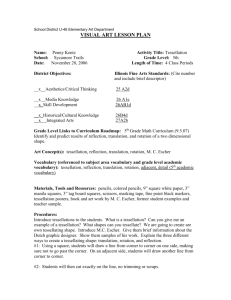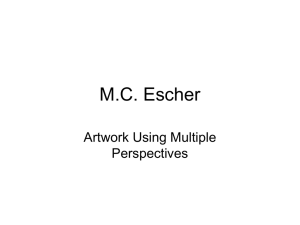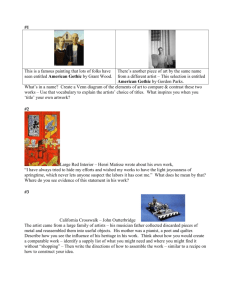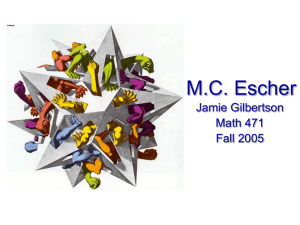Creating Tessellating Art
advertisement
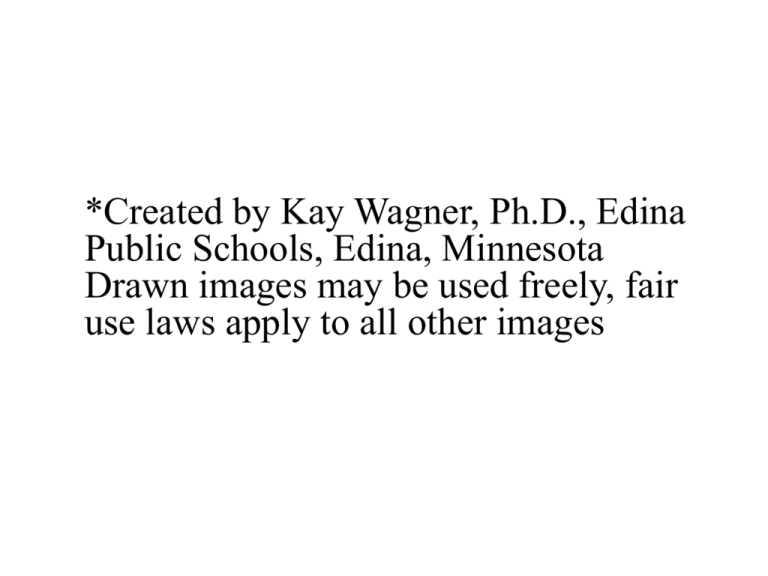
*Created by Kay Wagner, Ph.D., Edina Public Schools, Edina, Minnesota Drawn images may be used freely, fair use laws apply to all other images Creating Tessellating Art • Artwork inspired by M.C. Escher Tessellations Tessellations are arrangement of shapes that cover the picture without overlapping and without leaving spaces. Typically, the shapes making up a tessellation are simple similar regular shapes, such as the square. M.C. Escher developed the tessellating shape as an art form Escher was a graphic artist, who specialized in woodcuts and lithographs. * * He was born Maurits Cornelis Escher in 1898, in Leeuwarden, Holland. His father wanted him to be an architect, but bad grades in school and a love of drawing and design led him to a career in the graphic arts. * Escher Self-portrait Map showing where Escher was born He was unknown until the 1950’s But by 1956 he had given his first important exhibition, was written up in Time magazine, and acquired a world-wide reputation. * Among his greatest admirers were mathematicians, who recognized his work as pictures of mathematical ideas. This was amazing because he had no formal math training. * Escher saw tile patterns that gave him ideas for his art work His interest began in 1936, when he traveled to Spain and saw the tile patterns used in the Alhambra. He spent many days sketching these tile patterns, and later claimed that this “was the richest source of inspiration that I have ever tapped.” World map sowing Spain Alhambra Palace The Alhambra is a walled city and fortress in Granada, Spain. It was built during the last Islamic Dynasty (1238-1492). * The palace is lavishly decorated with stone and wood carvings and tile patterns on most of the ceilings, walls, and floors. * Alhambra Castle Alhambra consists of palaces built by several rulers, each had his own.castle. The Alhambra Palace is a famous example of Moorish architecture. It may be the most well known Muslim construction. Islamic art does not usually use representations of living beings, but uses geometric patterns, especially symmetric (repeating) patterns. The idea behind several of the buildings of Alhambra was to create a Paradise on earth. Escher used the geometry in his art that he saw at Alhambra As his work developed, he drew great inspiration from mathematical ideas he read about, often working directly from geometric shapes. * He was also fascinated with paradox and "impossible" figures, and developed many intriguing works of art. * Convex Concave Lithograph, March 1955 Escher was fascinated by every kind of tessellation In 1957 he wrote an essay on tessellations. Mathematicians, had shown that only the regular polygons, triangle, square, and hexagon * could be used for a tessellation . Escher used these basic shapes in his tessellations. * Sometimes Escher changed the basic shapes By “distorting” the basic shapes he changed them into animals, birds, and other figures. The effect can be both startling and beautiful. Escher Horses Lets make a simple tessellating shape Begin with a simple geometric shape - the square Change the shape of one side Copy this line on the opposite side Rotate the line and repeat it on the remaining edges Erase the original shape Add lines to the inside of the shapes to turn them into pictures. Add color to enhance your picture. By repeating your shape you create a tessellated picture Escher liked what he called “metamorphoses,” . where shapes changed and interacted with each other. Another example of metamorphosis Lets make a simple tessellating shape Begin with a simple geometric shape - the square Change the shape of one side Repeat the line on the opposite side Change the shape of the top Repeat this line on the bottom Erase the square Turn shape looking for two hidden animals, flowers, fish, insects, or birds. Draw a line that separates the two hidden shapes you have found. Add a few lines that bring out your hidden shapes. Separate the two shapes so you can use them one at a time Make four versions of each shape, each version with more detail The most detailed shape can be changed quite a bit Make four versions of each shape with more detail The most detailed shape can be changed quite a bit Color all of one type of shape the same basic color scheme Line up the simplest shape with the most complex along the bottom Line up the next most complex with the next simplest Add the next row in the same way Completed Tessellation Completed Tessellation Completed Tessellation


